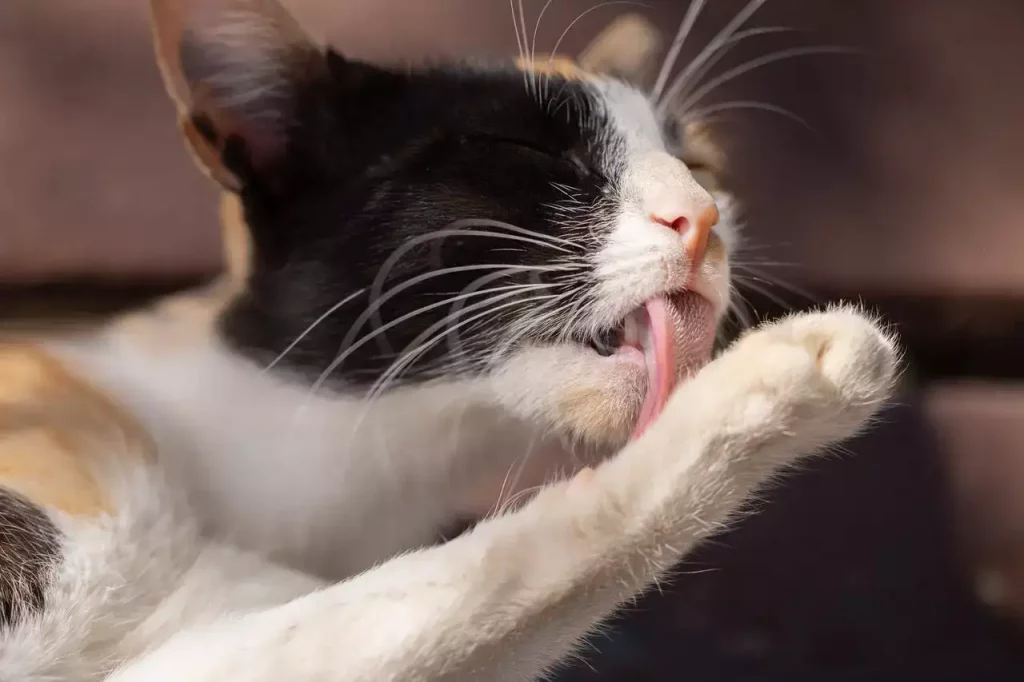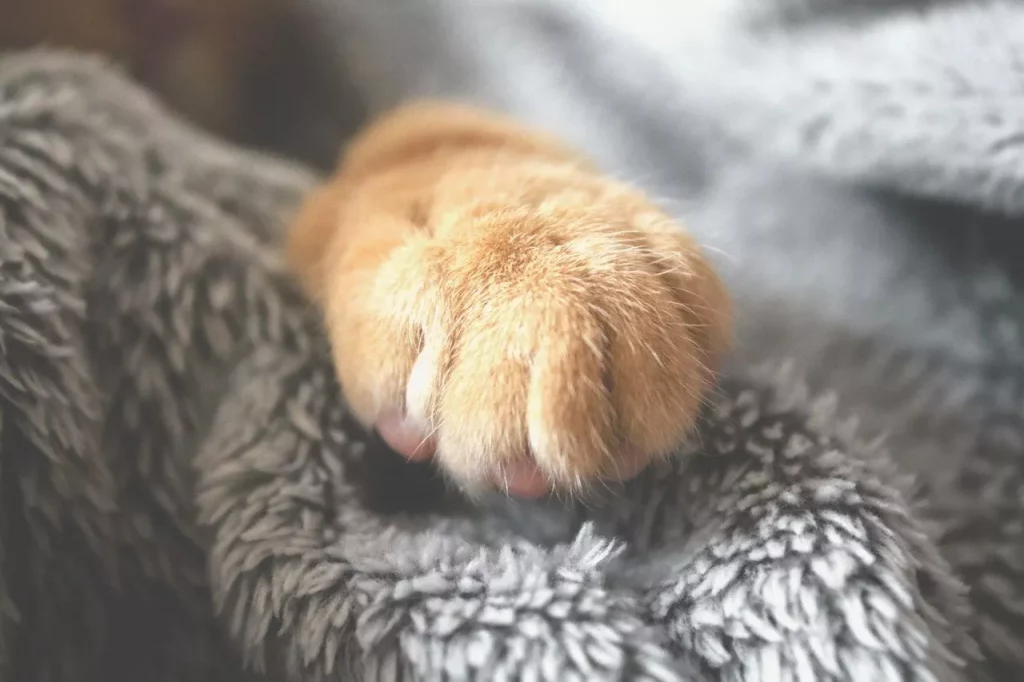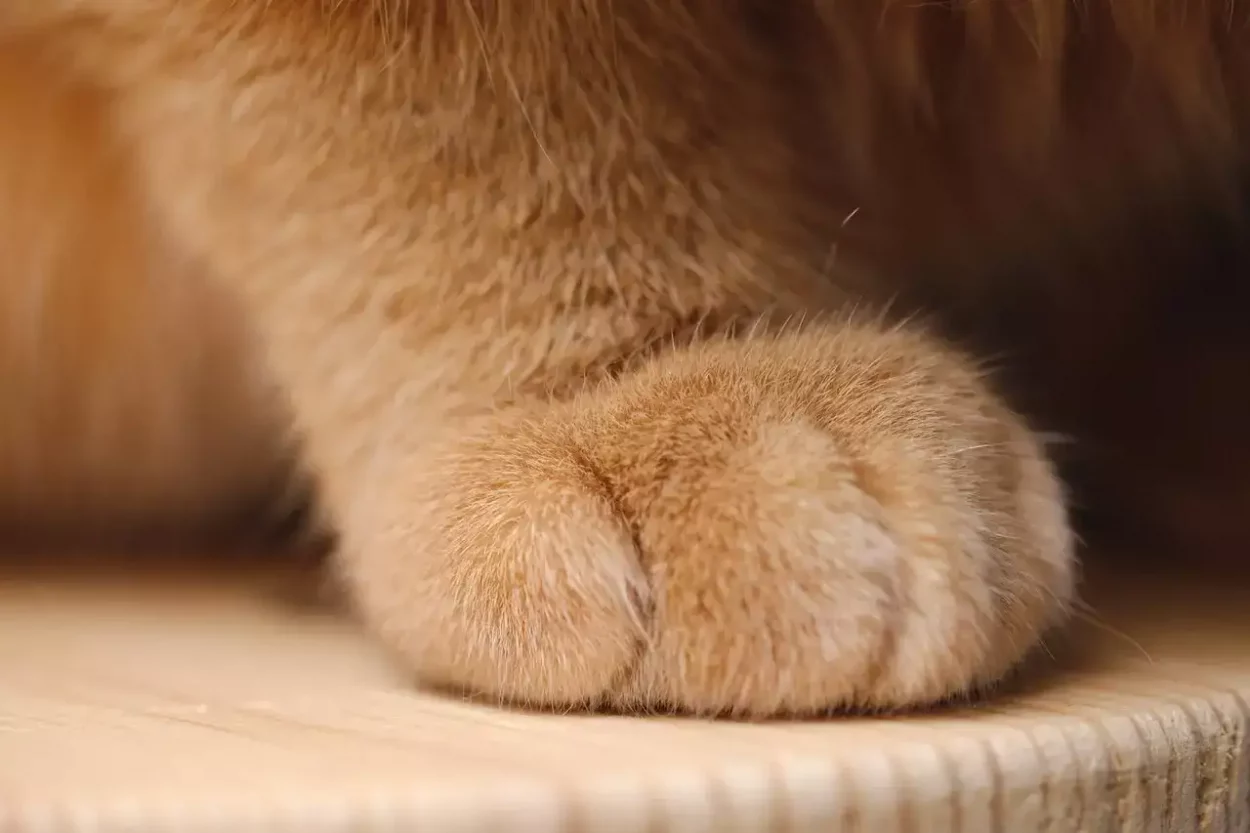One of the most common injuries reported in cats are broken paws. These types of injuries can happen anywhere and at any time and can sometimes prove very tricky to detect. And once you know about the injury, what do you do if your cat has a broken paw?
In this short guide, I hope to explain how you treat a cat’s broken paw, and how to even find out if there’s a break in the first place.
How do you treat a cat’s broken paw?
How you treat a cat’s broken paw is often down to how small cat paws are, as other injuries involving the legs are easier to spot because of their size.
Thankfully, broken paws in cats are often less serious than other types of fractures (such as those found in the legs or ankles) and are easier to deal with for both vets and owners.
Despite this, any injury to your cat should still be a cause for concern. Although less serious than other injuries, broken paws are still very painful for felines.
Also, undetected broken paws can sometimes lead to further complications if left untreated. However, as mentioned before, it can sometimes take a practiced eye to realize that your cat has broken their paws.

Thankfully, in this article, I will explain the signs you should look out for to safely diagnose a broken paw in your cat.
As well as the steps you should take to help them to recover. Hopefully, with this knowledge in hand, you will be better equipped to deal with the possibility of your beloved kitten hurting themselves in this way.
How do you know if your cat’s paw is broken? (Broken paw signs)
All cats are different, that goes without saying. Some have high pain tolerances, whilst others do not. Therefore, it can sometimes be hard to tell when your cat is injured, especially if it comes from a hardy breed.
Similar to this, cats can at times show signs of pain in uniquely different ways compared to other pets in the family or household.
For example, some cats may become shy and elusive when they are in pain, whilst others do the opposite and become very needy, looking for constant comfort from their owners.
If you notice these kinds of behaviors in your cat, even without any obvious signs of injury, you should still make sure to discuss your concerns with your vet. Some cats are very good at hiding smaller injuries, and you may only realize something is wrong when they start acting out of character.
Despite these differences in behaviors, there are several things you should look out for if you suspect your cat has broken a paw.

For example, most cats will limp when they have injured the area around their paws, and this will be particularly noticeable if they have broken their weight-bearing paw.
Similarly, depending on the severity of the fracture, they may even become lame, refusing to walk on the affected paw at all.
Another symptom is swelling. Although swelling isn’t the easiest to notice, especially if subtle, you should make sure to examine your cat’s paws for signs of this if you suspect something is wrong.
However, before you do this, you should first ensure that your cat is comfortable with you touching their paw. Whilst it rarely happens, certain cats can become more aggressive compared to normal when they are injured. This is often true even for the most placid of cats and can be a major indicator that something is amiss.
If your cat is fine with you touching its leg and paw, you should do so gently, looking for any signs of swelling.
If you are finding it difficult to tell whether it is swollen, you should compare the injured paw to your cat’s uninjured paw. With severe breaks, the swelling will often be very noticeable, and it will not take you very long to figure out that something is wrong.
However, this is not the easiest thing to see in long-haired breeds.
If your cat begins to whine or cry or show any other signs of distress whilst you examine its paw, you should stop immediately. You must not aggravate the injured area, as this could lead to further damage.
Likewise, if you can get a good look at your cat’s paw without touching it, then you should take this action instead.
A good tip would be to wait until your cat is asleep, giving you the chance to examine the injured area closely without disturbing them.
You might also notice your cat licking its paw if the paws are injured. Cats will do this to try and relieve the pain whilst comforting themselves. However, this can further worsen the injury if the cat is constantly licking and worrying at it.
Lastly, as previously mentioned, changes in behavior can also indicate that your cat is in pain. Some cats will completely lose their appetite after an injury, refusing to eat any meals you have prepared for them. Similarly, they may also become depressed and lethargic if the injury has not been properly treated and is still causing them discomfort.
What should you do if your cat has broken a paws?
If you have concluded that your cat has broken its paws or has had a similar type of injury, you should take them to the vet as soon as possible. You should do this even if you think it is not serious, as the vet will be far more qualified to accurately diagnose the seriousness of the injury.
Unlike a broken leg, transporting a cat with a broken paw to the vet is often a lot easier. However, you may find that you will have to pick your cat up if you need to place them in the car. This will especially be true if they have only just recently injured themselves, as they will be reluctant to put weight on their paw, sometimes refusing to move at all.
Additionally, lifting them into the car will help to avoid any further damage that might be caused by them trying to get in themselves. Furthermore, it might be beneficial to lay down blankets on the seats, especially if the injury is particularly sensitive. This will stop any possibility of further damage to the paw from hard surfaces in the vehicle.

If the paw is an open fracture, you may have to perform first aid immediately before doing anything else (open fractures are particularly nasty breaks that are categorized by the bone pushing out through the skin).
Do this by wrapping the wound with either a clean towel or gauze and apply gentle pressure to stop any bleeding – to prevent your cat from going into shock you could also wrap them in a blanket.
What can cause a cat to break its paws?
Cats can sustain a broken paw or her both paws through various mishaps and accidents. For example, smaller breeds of cats are particularly at risk due to their diminutive size and can easily be stepped on due to clumsiness.
These types of cats are more delicate when it comes to their larger cousins, and as such, are more likely to sustain fractures to their paws. However, this does not mean that larger cats are not susceptible to this as well.
Additionally, large falls and misjudged jumps can also lead to broken paws. Larger and more active cats commonly overestimate their abilities, jumping from balconies, staircases, and small cliffs leading to injuries to their legs or paws.
If you have a cat who is prone to risky feats such as these, you should take precautions to stop them from hurting themselves (keeping them on a lead in dangerous areas outside and making sure they are not left to their own devices at home).
Cats can also break their paws if they lack the correct amount of calcium in their bodies. Commonly, this is often caused by malnourishment or improper diets and can lead to a lack of bone density.
This condition stops cats from being able to prevent fractures when jumping or landing on their feet. If you suspect your cat is not getting the correct diet to ensure it has healthy bones, you should talk to your vet regarding dietary requirements.
Lastly, cats can sustain broken paws from accidents caused by vehicles or bikes, as well as accidentally getting their paws stuck in various areas.
The latter often happens when they attempt to wiggle through small gaps, or when they get their paws caught in things such as thick fabric or floorboards in the home. To minimize the risk of this happening you should undertake an inventory of your house and fix areas in which your kitten might be at risk of injury.
Conclusion
Unfortunately, leg injuries are pretty common for cats, as are broken bones. Although it might be scary for you to think about, the chances are you will have to deal with a leg injury at some point in your cat’s life.
We all want to keep our cats safe, but with active and energetic felines it’s not always possible. Instead, we should prepare ourselves for the possibility that they may hurt themselves in the near future.
The bottom line is this; if your cat has a broken paw, the thing to do is to go to a vet for expert advice.


I would go to the vet if:
Not one competent vet where I live
If I had an extra $1000
St least for office visit, x-rays, exam, meds.
I’m handicap n no longer drive so add $50 for taxi.
Need advice HOME TREATMENTS for possible fracture or sprain left front paw. I stepped on her when she ran through me legs. She Ate. She’s aware but napping now.